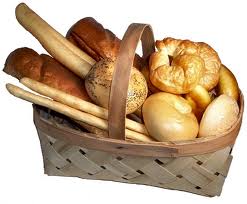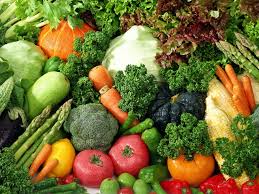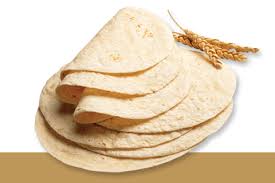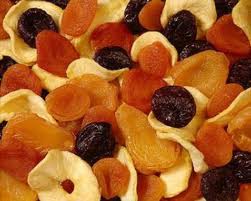Life is made up of a long chain of experiences. Some bitter, some sweet, some mundane, and some exciting. Let me share one with you. About ten years ago I had the good fortune to have an inspiring experience in Morocco, of all places. The purpose of my trip was to inspect various Star-K companies that exported olives and olive oil to the U.S. The inspiration came as a result of spending two days with the remnant of the once thriving ancient Jewish community of Meknes. Meknes was home to many Rabbanim, Geonim, and Tzadikim. The Ohr Hachaim HaKodosh, the great luminary who wrote the famous commentary on Chumash, was born in Meknes. The Jewish cemetery dates back 1200 years. Today barely two hundred families remain. The Rav of the small kehilla is a holy Jew by the name of Rabbi Chaim Kasous, who had served […]

Pas or Pas Nisht: Reviewing the Laws of Pas Akum

Pas Habah B’Kisnin: Pas or Pas Nisht
Spring 2005 | Updated August 2013
…Sora spent the whole morning shopping and was ready to stop for lunch. She was in luck. The kosher pizza shop was down the block from the mall. Since she was watching her weight she did not want to indulge, so she ordered one slice, salad and a diet soda. As she carried her order to her seat, she was faced with a dilemma: which brocha (blessing) should she make – mezonos or hamotzi?
…It was a beautiful wedding with a magnificent stand up smorgasbord. Naturally, the guests lined the carving tables to indulge in delicious corned beef. The glatt[...] Read More

FOOD FIT FOR A KING: Reviewing the Laws of Bishul Akum & Bishul Yisroel
It is not uncommon for food manufacturers to call us with a keen interest in kosher certification but who don’t have the slightest idea what it takes to produce a kosher product. What complicates matters is that they would like to have a kashrus tutorial capsulized into a telephone conversation. Obviously, we can’t give a thorough kashrus course over the phone, but we can categorize practical kashrus into three main areas: ingredients, equipment, and process.

The Rise and Fall of Wonder Bread
Published Spring 2013
It has been called the staff of life. “Lechem” (bread) makes a quick cameo appearance for posterity, when the Ribbono Shel Olam charts the course of mankind for time immemorial by punishing Adam HaRrishon with the words, “Bezaias apecha tochal lechem”,1 “You will eat bread by the sweat of your brow.” Of course, it is obvious to everyone – both young and old- that lechem means bread!

“-ASE” לכל חפץ
Published Spring 2013
In the course of his daily routine, a mashgiach deals with dozens-if not hundreds-of food ingredients. In the arcane world of modern food technology, terms like “enzymes”, “substrates”, “emulsifiers”, “stabilizers”, and “surfactants” lend some technical significance. But, in the real world one may ask, “What has an enzyme done for me lately?” This article will address some of the direct applications of enzymes in our diet.

STAR-K Tevilas Keilim Chart
Kashrus Kurrents Summer 2015 | Updated March 2024
(ORIGINALLY PUBLISHED AS: A Practical Guide to Tevilas Keilim)
For a summary of the halachos involved, refer to Tevilas Keilim: Basic Guidelines.
UTENSIL
NEED FOR TEVILA – WITH OR WITHOUT A BRACHA
Aluminum Pan, Disposable
Tevila without a bracha if intended to be used only once; tevila with a bracha if intended to be used more than once.[1]
Aluminum Pan, Non-disposable
Tevila with a bracha[2]
Apple Corer (metal)
Tevila with a bracha
Baking/Cookie Sheet
Tevila with a bracha
Barbeque Grill
Racks require tevila with a bracha, other components do not require tevila.
Blech
No tevila
Blender/Mixer
Glass or metal bowl, metal blades and other attachments require tevila with a bracha, other components do not require tevila. Handheld immersion blender requires tevila with a bracha.
Bottle (metal or glass)
Tevila with a bracha. If bought filled with food and subsequently emptied by a Jew, does not require tevila.[3]
Brush (grill, egg yolk, pastry)
No tevila
Cake Plate (metal or glass)
Plate needs tevila with a bracha, cake plate cover does not require tevila.
Can (metal or glass)
Tevila with a bracha. If bought filled with food and subsequently emptied by […]

Terumos and Ma’asros
Published Spring 2002 | Updated August 2024
Eretz Yisroel has the unique privilege of being the recipient of the Ribono Shel Olam’s brachos throughout the year. Its agricultural industry continues to grow and flourish. Consumer products from Israel that are exported to the American marketplace include Jaffa oranges, grapefruits, pomelos, clementines, carrots, parsley, Carmel and canned tomatoes, peppers, candies, jams, jellies, olives and pickled products. Industrial products used for manufacturing include tomato sauce, tomato paste, orange oil, lemon oil and spices.
Besides for all the ingredients and processing concerns which confront the kosher consumer, additional kashrus requirements apply to foods grown, produced or imported from Israel. A consumer must be sure that terumos and ma’asros have been properly separated before eating, and that the fruits do not come from trees that are orla or neta revai or shemita.
What Are Terumos and Ma’asros?
Terumos (literally, separations) and ma’asros (literally, a tenth) were compulsory […]

Charting the Course of Orla
Published Summer 2013
When a tourist comes to Israel from the Diaspora one of the things he has to get used to is the mitzvos hatluot b’aretz, the mitzvos that are unique to Israel. After he gets through taking trumah and maaser, tithing, and makes sure he doesn’t come during shmitta (beware next year!) he is suddenly hit with orla. And when he asks how to cope with this unfamiliar problem he is sometimes given a chart with a list of fruits and orla percentages which, if he isn’t totally confused, the charts will certainly finish off the job. “What do all these percentages mean? And why,” he asks, “can’t someone give me a yes or no answer instead of these percentages?” So what do the percentages on these fruit charts mean?

A Halachic Exercise in self control
Published Summer 2013
SCENE 1: You are hungry. You desperately need something to hit the spot. Suddenly your friend offers you a delicious chocolate frosted cupcake . . . complete with sprinkles. Your mouth begins to water . . . you are just about to take that first irresistible bite when your inner voice raises the age-old query, “How do you know if it is Kosher?” Your ecstasy is short lived. Your hand pulls back and you put the cupcake down. You exercised self control. You are still hungry but you passed the test.

OTZER BAIS DIN: Proper Distribution of Shmitta Produce
Rav Aharon Tendler, Ner Israel Mechina High School
Our rabbis have taught that if the Jewish nation would observe two Shabbosos, they would be immediately redeemed1. Generally, this is understood to mean that the redemption will come if we observe two consecutive Shabbosos. The question arises as to the significance of two Shabbosos, and many responses have been provided. There is a beautiful answer offered by the former Chief Rabbi of Moscow, Rabbi Fishman, in his introduction to a commentary on the Yerushalmi Mesechta Shevi’is. Rabbi Fishman maintains that the two Shabbosos actually refer to the seventh day of the week when we refrain from all melacha, constructive work, and the seventh year of shmitta, when we withdraw our ownership from the land of Israel and declare all produce ownerless and available for all to take.

The Kashrus of Tea – With No Strings Attached!
Published Summer 2013
Americans, generally, do not drink as much tea as the rest of world. This may have something to do with a certain party they had in Boston a while back. That being the case, you might be surprised to learn that tea is second only to water in worldwide beverage consumption. In fact, some estimates place tea consumption in the billions of cups daily. That’s a lot of tea. However, with recent health benefits being ascribed to tea, its popularity in this country is definitely on the rise. In this article we will explore the world of tea and what questions there are vis-à-vis kashrus and halacha. First, a little background is in order.

Kashrus in High Spirits
Winter 2005
Jewish life-cycle events, be it a bris, a bar mitzvah, or a wedding, are special occasions that we anticipate eagerly and celebrate with joy. At any simcha, we fill our cups with wine, raise our glasses of schnapps, and with great fervor pronounce a resounding “L’chaim!” in honor of the blessed event. This custom of melding alcohol with simcha has been a Jewish practice from time immemorial. The cup that is raised today, however, bears very little resemblance to that of yesteryear.

It’s a Siman that it’s Kosher: Avoiding Bosor Shenisalaim Min Hoayin
An Interview With Rabbi Moshe Heinemann
STAR-K Rabbinic Administrator
INTRODUCTION:
The world of kashrus has played, and continues to play, a dominant role in the life of a Jew and the life blood of Judaism. This centrality is evidenced by the significant halachic treatment of kashrus in the Shulchan Aruch, by our Poskim, and in contemporary Torah journals, as well as the particular attention paid to the kosher consumer stretching from the aisles of the supermarket to the media portfolios of the marketplace.

Star-K Certified Canned Vegetables
(The following list of certified canned vegetables are certified kosher only when bearing the Star-K symbol)
Aegean Gourmet
Finesse
Ningbo Orient Jiuzhou
Sysco
Agro Dutch
Foodtown
Noam Gourmet
Sysco Arrezzio
Alessi
Freshlike
Olympion
Sysco Classic
Allens
Fronte
Pacific Delite
Sysco Imperial
Alma
GFS
Pathmark
Taco Mac
Ambrosia
Gandules
Pocahontas
Taylor
America’s Choice
Geisha
Popeye
Tongfa
American Roland
Georgia Belle
Premium
Tops
Ashley
Giant
Princella
Trappey’s
Assagio Classico
Gold Plum
Red Feather
Tuna Delight
B-Tam
Great Value
Red Rooster
Tyling
Bellagio
Guiguo
Reese
U.S. Blue
Benz’s Bilo
Happy Chef
Restaurant Row
U.S. Food Service Roseli
Bountiful Harvest
Harvest Valu
Roland
U.S. Red
Brown Beauty
Herko
Royal Prince
Uncle Williams
Bruce’s
Homefolks
Royalty
Ungers
Butterfield
Horn of Plenty
Ruby
Veg-All
California Delight
Inter-Food
Rykoff Sexton Green
Vigo
Casa Diva
Jeraci
San Pablo
Vitarroz
Casa Fiesta
Jinke
Santa Lucia
Viva Mexico
Chai-Kee
La Romanella
Saruhan
Vivaci
Chopsie’s
Lijiang
Selena
Wegman’s Whyte’s
Classic/Arrezzio
Louisiana
Smart & Final
Wolco
Conservas Martinez Garcia
Mancini
Snack Delite
Yarden
Crest Top
Manolito
Southern Home
Yilong
D&S
Marco Polo
Stone Mountain
Zumdieck
Del Destino
Marcove
Stop & Shop
Dintel
Mexene
Sugary Sam
Dorman
Milfiore
Sun of Italy
Dunbars
Mistral
Sunfield
East Texas Fair
Monte Lupo
Sunshine
Eden
Montecito
Super G
El Rio
Moody Dunbar
Supremo Italiano
Empress
Natural Value
Sylvia’s

Can it be Kosher
How often have we heard the query, “What’s the problem with plain canned vegetables? It’s only vegetables, water and salt in a can!” True. It’s also true that today you can buy vegetables with a hechsher, salt with a hechsher, water with a hechsher even cans with a hechsher! But does 1 + 1 + 1 + 1 = 4? Can a kosher consumer buy canned corn off the shelf or should the kosher consumer beware?

Hydroponics
The AeroGarden is a unique hydroponic system, enabling home-growing of vegetables. ( Note: STAR-K no longer certifies The Aerogarden) The entrance of this system into the marketplace presents an opportunity to discuss the history and halachos of hydroponics.

All Washed Up
In the health conscious world of the new millennium, healthful fine dining and garden fresh vegetables have taken an honorable position of prominence. Salad bars are in vogue. A colorful salad helps dress up the bland dinner plate. Fresh vegetables are healthy and wholesome. Unfortunately, it also causes havoc with the G-d fearing housewife, or the caterer’s mashgiach, who want to make sure that the vegetables served are not only clean and fresh, but insect-free, as well. Oftentimes, this task is tedious, time consuming, and frustrating. This is particularly true when dealing with large quantities of exotic, leafy vegetables that have to be inspected in a relatively short amount of time. What is the answer?

The Tell Tail Sign
Our Rabbis in their sage understanding of human nature tell us, “Al tistakel b’kankan elah b’mah sheyaish bo.” Do not look at the outer receptacle, look at its inner contents. This adage has often been loosely translated into the famous American adage, “Don’t judge a book by its cover.” In the case of kosher fish supervision, in order to determine whether the fish is, indeed, kosher it has to be judged by its cover.
The Torah states clearly how one is to determine whether or not a fish is kosher. If the fish has ‘snapir v’kaskeses’, fins and scales, the fish is kosher. Fish that have only fins, such as catfish, or totally smooth skin, such as eel, or crustaceans, such as lobster, are non-kosher.
Fish production is an active global enterprise. Nile perch from Nairobi, tuna from Fiji, farm-raised salmon from Chile and flounder from China arrive daily to fish companies […]

The Sweetest Fruit of Them All
Unbelievable but true.
Overheard conversation between Mother and a precocious seven year old at a typical supper table…
“Now dear you must eat your fruits and vegetables!”
“I just finished a delicious double portion.”
“Great what did you eat?”
“A yummy chocolate bar.”

The Spice of Life: A Kashrus Overview of Salt & Pepper
The use of spices in preparing food has played a role in history disproportionate to their nutritional value. A ransom paid by Alaric the Goth that included three thousand pounds of pepper delayed the attack of Rome for two years. The discovery of the New World was due, in great measure to the search for such spices; that was the main objective of the early trans-Atlantic explorers. Our Rabbis tell us1 that the Torah is compared to salt and the Mishna to pepper. Indeed, the kashrus issues related to salt and pepper give us sufficient reason to analyze these primary food ingredients.

Olive Oil: The Contemporary Industry of Antiquity
Olive oil, the liquid gold of the ancients was touted for its nutritional, medicinal, and cosmetic value. As a fuel it illuminated the home. As a food ingredient it was a feast to the palate. Olive oil production is one of the world’s oldest industries. Interestingly, much of this ancient industry has not changed over the millennia.

It’s Takke a Taco
Those tried and true N.Y. subway travelers of the ‘60’s and ‘70’s remember the memorable poster of the smiling Indian holding a delicious corned beef sandwich with the caption, “You don’t have to be Jewish to Love Levy’s Real Jewish Rye.” Today, with the virtual explosion of ethnic foods, you don’t have to be Japanese to enjoy Sushi, you don’t have to be Italian to enjoy ravioli or minestrone, and you don’t have to be Mexican to enjoy tacos and burritos. However, the common link between all these ethnic foods is that today the kosher consumer can sink his teeth into a delicious enchilada or schwarma that bears reliable kosher certification.

Industrial Eggs: Not As Simple As it May Seem
The talmudic paradigm for a concept that is blatantly obvious is Keveiasa Bechuscha, the issue is as clear as the permissibility of mixing eggs into dairy products. However, things are not always as simple as they may seem, and just as the Ba’alei HoTosfos in Maseches Eiruvin discuss how less than “obvious” this concept may be, the production and use of eggs in modern food production pose questions whose answers are far from being considered obvious. The purpose of this article is to discuss some of the issues that confront modern kashrus supervision as they relate to egg production.

Enzymes
Published Spring 2013
Centuries ago, the ancient Greeks recognized that there were certain properties in leaven which caused chemical changes in flour and water converting it into bread. They called the magical ingredient “enzyme” which is the Greek term for “in leaven.” Today enzyme remains the term by which we refer to these biological catalysts. We now understand that enzymes are proteins found in every living organism be it animal, vegetable, or microbial.

Dried Fruit: Nature’s Way of Wrinkling Gracefully
It has been called nature’s candy. It’s a sweet source of nutrition whose popularity is on the rise. Commensurate with its growing popularity is its demand. In today’s global economy the dried fruit trade literally spans the entire globe. Apples from China, prunes from Bulgaria, figs from the Middle East, dates from Tunisia, or raisins from South America, and of course apples, peaches, plums, raisins, figs, and dates in the good old USA. Naturally, this growth presents a whole new set of challenges to kashrus agencies. How do you send a mashgiach to supervise date productions in Pakistan, raisin productions in Iran, or plum productions in Bulgaria?

Candy is Dandy
Kashrus Kurrents, Winter 1997
Walking through a candy store leaves one with little doubt that great creative genius has been a long time associate of the candy industry. It is an absolutely amazing act of wizardry to see the multitude of confectionery varieties, shapes, textures, and tastes that can emerge from sugar, chocolate, and corn syrup. Chewy caramels, cotton candy, lollipops, chocolate pralines, nut logs with creamy nougat fillings, the list is endless.
So what could be wrong with candy? Especially if the ingredient panel states only simple, natural ingredients? Not so simple.
At times a product may have nothing that presents a Kashrus problem, but at other times the seemingly identical product can be very problematic.
Let’s take a behind the scenes tour of Kosher candy manufacturing, where we can examine the production processes and procedures of some of the popular delicious confections enabling us to pinpoint the Kashrus […]

A 30 Year Retrospective on Kashrus Kurrents
Published Summer 2008
Approximately thirty years ago shortly before “Pesach” 5738 Mr. A. J. Levin, a vice president of the Orthodox Jewish Council, began publishing Kashrus Kurrents. In that first issue, printed on the familiar yellow paper with the blue Kashrus Kurrents logo, it was deemed necessary to advise the Baltimore community that they cannot rely on labels or advertisements that merely states ‘Kosher for Passover’. From that same issue we learned that the fledgling Star-K organization had just inaugurated its kosher hot-line whereby one could get accurate kashrus information Monday through Thursday between the hours of 10 a.m. to 12 p.m.

The Importance of Accurate Kashrus Information
As Bnai Torah we tend to consider ourselves sophisticated and knowledgeable regarding matters that we deem important. We are not easily swayed by glitzy advertising, nor are we apt to blindly follow recommendations from others unless we are convinced that the proffered advice is sound and based on actual knowledge. When making a major purchase such as an automobile, or deciding which yeshiva or seminary is the right choice for our son or daughter, we make a decision after deliberate and careful investigation of the facts. Of course, we do accept the opinion of others, but only after we are convinced that the one dispensing advice has factual knowledge of the issue at hand.

Kosher Chickens: From Coop to Soup
Published Spring 2007
There is a strange but true phenomenon that has resulted in our society’s technologically
motivated, highly competitive marketplace. If a manufacturer or producer desires to remain viable and competitive, he never loses sight of the fact that successful business demands innovation, creativity and growth. Status quo in the manufacturer’s lexicon often means stagnation, and no company wants to stagnate. In turn, the manufacturer on the move continues to innovate in an environment that encourages survival of the fittest. This presents additional challenges for products requiring kosher supervision from a kashrus agency. These axioms are very keenly felt in the production of kosher poultry, where halachic ingenuity and technological advances converge. The average kosher consumer rarely, if ever, has the opportunity to see a large or small slaughterhouse in action. Therefore, Kashrus Kurrents offers its readers an inside look at the policies and procedures of […]

Star-K Side Bar Summer 2007
Other News From The STAR-K
STAR-K Kashrus Training Program!

 STAR-D
STAR-D STAR-S
STAR-S